How to Avoid the Crowds at America’s Most-Visited National Parks
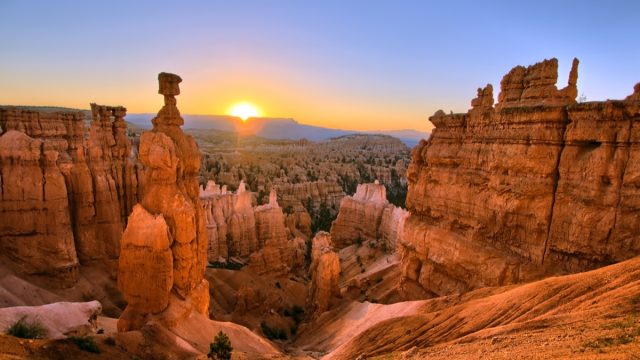
Ever since President Ulysses S. Grant signed a bill to inaugurate Yellowstone a national park back in 1872, more than 15 billion (yes, billion) people have flocked to America’s national parks, monuments, historic trails, and conservation areas. While that number may be impossible to comprehend, the reasons why sightseers come out in droves are not.
From Acadia’s rocky Atlantic shores to Yosemite’s ancient soaring sequoias, each and every national park is home to awe-inspiring wonders. Of course, with such magnificent landscapes come unavoidable crowds—unless you plan ahead, that is. So read on to find the 15 most-visited U.S. national parks and how to explore them without a tourist in sight.
1
Dodge the summer swarms at Great Smoky Mountains National Park.
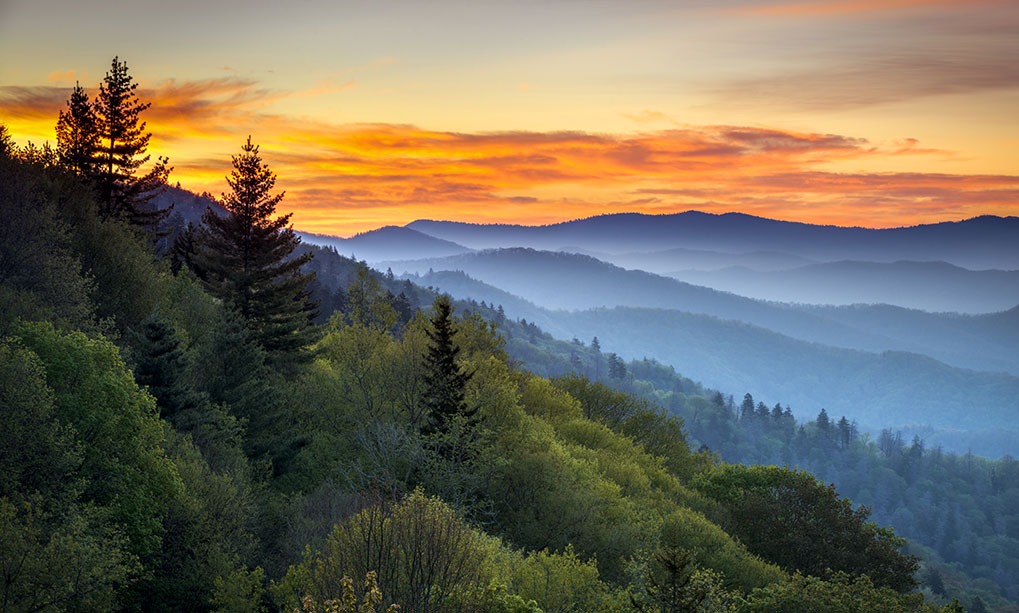
If you thought the Grand Canyon would top our list, think again. Last year, Great Smoky Mountains National Park—the most biodiverse area in the entire National Park Service—welcomed an astounding 12.5 million visitors. If you’re looking to traverse the park’s lush spruce-fir forests, misty mountain peaks, and year-round wildflower blooms, try to plan your visit between March and May—before the summer swarms appear—or in early September, pre leaf-peeping season. During both you’ll find mild temperatures (think 40 to 60 degrees) as well as reduced accommodation rates. Bonus: Great Smoky Mountains is free to enter!
Pro tip: Skip the traffic along Newfound Gap Road, and cruise down Foothills Parkway, a scenic mountainside drive that completed an expansion in November 2018.
2
Know the lighter three-month “sweet spot” at Grand Canyon National Park.

While the Great Smoky Mountains easily exceeded the Grand Canyon in terms of 2019 visitors, the latter still came to play with nearly six million guests of its own. Despite having plenty of space to roam—the river gorge measures 277 miles while the park itself is more than one million acres—the Grand Canyon can quickly get congested. To avoid the rush as best you can, book your vacation sometime in September, October, or November. With school finally back in session and temperatures in the 45- to 65-degree range, the three-month stretch is a definite sweet spot for travel to Arizona’s remote northwestern corner.
Pro tip: Instead of joining the riff-raff at the top of Horseshoe Bend, book a multi-day rafting excursion with Wilderness River Adventures. It’s a whole other perspective to see the Grand Canyon by coasting over rapids and camping on riverbanks.
3
Consider a backcountry adventure at Rocky Mountain National Park.
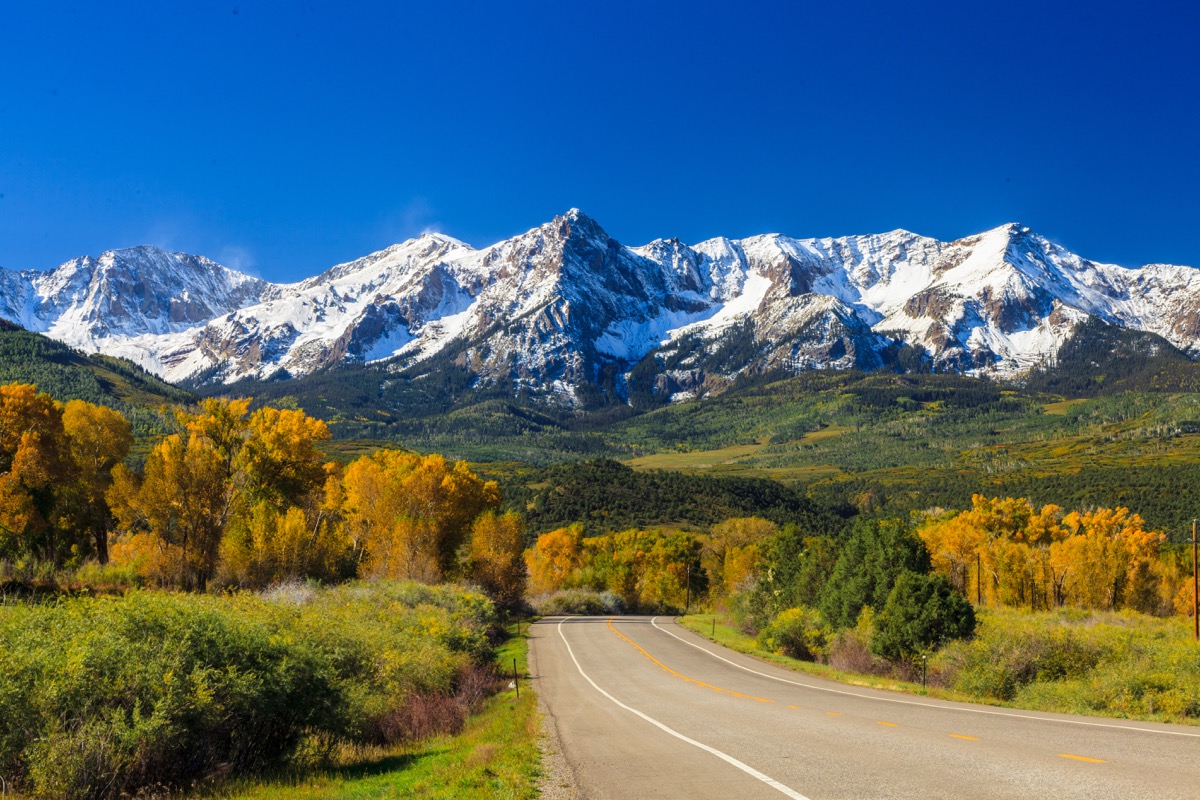
Backcountry camping sites, postcard-perfect glacial lakes, rugged rock faces, and scenic alpine tundras drew more than 4.6 million outdoor enthusiasts to this Colorado gem just last year. While its 265,461 acres afford room to stretch out, some months are busier than others. If you’re looking for thinner throngs, a general rule of thumb is to avoid June to September. Of course, this period is popular for a reason: It’s when the snow finally melts and more hiking trails are accessible. If you’re down to snowshoe or dust off your cross-country skis, though, October through May will be far less busy.
Pro tip: The nine-mile Sky Pond trail takes you past The Loch, Lake of Glass, and a handful of waterfalls. It’s not the easiest trek, but that’s exactly why you’ll have it all to yourself.
4
Take a scenic drive at Zion National Park.
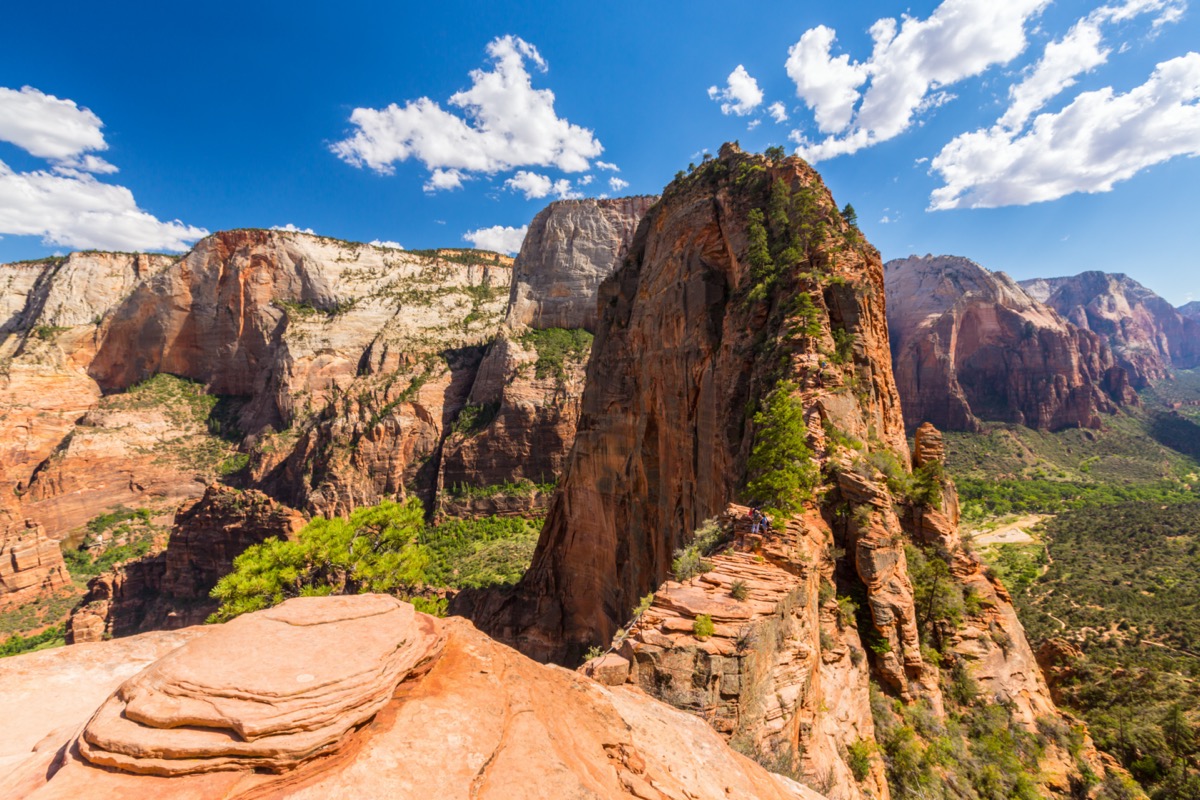
In 2019, Zion National Park was hot on the Rocky Mountains’ heels as it clocked nearly 4.5 million visitors. And with more arresting canyons, mesas, mountain peaks, buttes, and plateaus than one can count, it’s no surprise why. The southwest Utah spot sees its fair share of families year-round, but if you can swing a visit sometime between December and April, you’ll be rewarded with far smaller crowds. Just keep an eye on the weather as exceedingly low temperatures can make some attractions—like the Narrows—harder to enjoy. Whenever you visit, consider adding Bryce Canyon National Park, Grand Staircase-Escalante National Monument, Lake Powell, or the Grand Canyon to your itinerary as they’re all in a 3.5-hour radius.
Pro tip: For those traveling with children, take a scenic drive through Kolob Canyons and top it off with a quick and easy stroll along Timber Creek Overlook trail for panoramic views.
5
Hike hidden waterfall trails at Yosemite National Park.
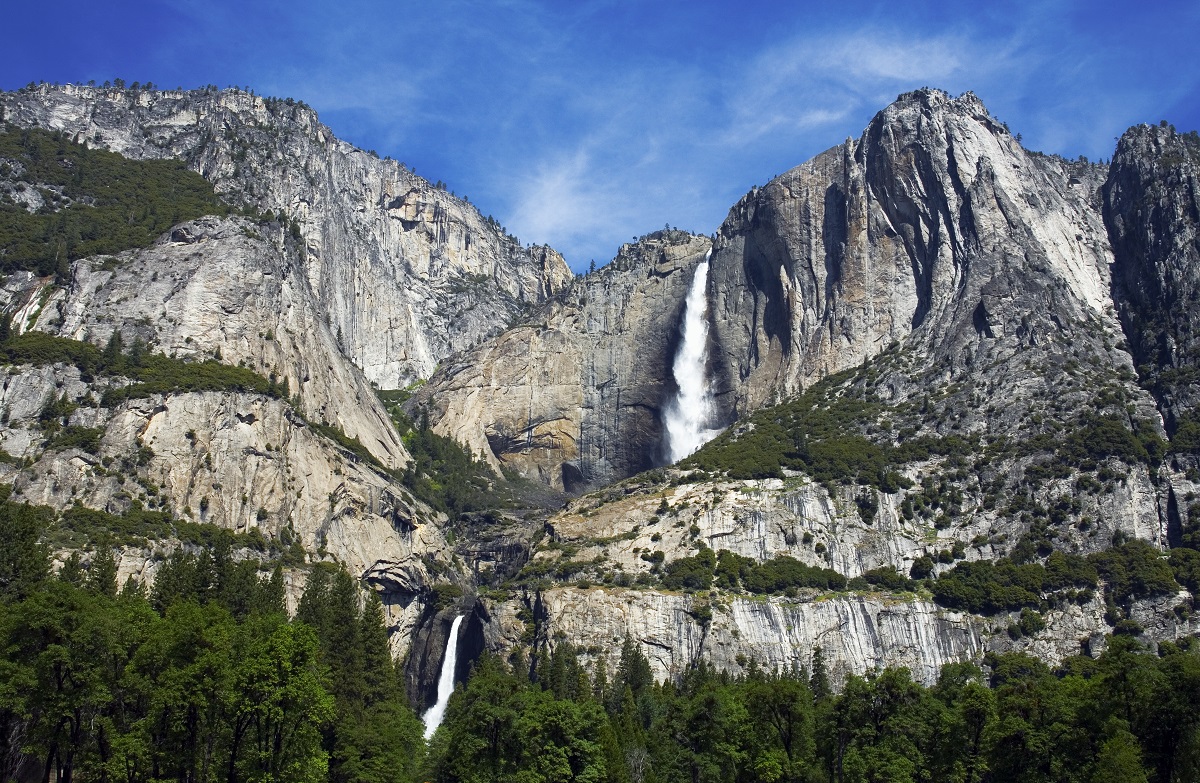
Central California’s Yosemite National Park is a real sight to be seen—just ask the more than four million people who experienced it last year. The park, which is nestled in the state’s western Sierra Nevada mountains, harbors granite cliffs, soaring sequoia groves, glacially cut canyons, and thundering cascades, among many other awe-inspiring vistas. While the majority of travelers touch down during the summer months when seasonally closed roads are finally open, it’s also when hotel prices surge and traffic appears on the park’s trails. Instead of competing for space, drop by in late spring or early fall when temperatures are mild and most treks are still available.
Pro tip: If waterfalls are your favorite feature, you’ll have to join the masses in May when they’re the most intense during the snowmelt. However, you can find some solitude at Illilouette Falls, which is accessible via a two-mile hike on Panorama Trail, starting at Glacier Point.
6
Skip the main sights at Yellowstone National Park.
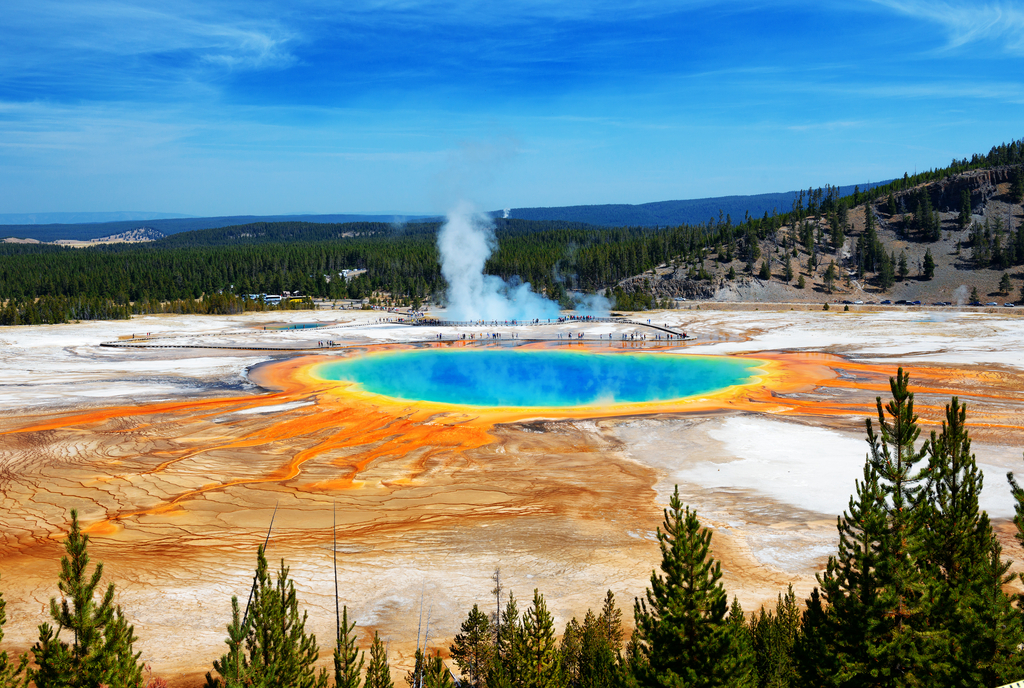
As America’s first national park, Yellowstone is no stranger to spellbinding sights or eager adventurers. Hot springs, mud pots, high-altitude lakes, and the continent’s largest supervolcano are all here, after all. While some star attractions—like Old Faithful—naturally see more guests than others, it is possible to avoid the majority of the park’s four million annual visitors if you plan your getaway carefully. April to May and September to October are generally the park’s sweet spots (a.k.a. shoulder season). During these months, the packs of people dwindle and wildlife is abundant; just wear layers as the temperature can change at a moment’s notice.
Pro tip: Hike along the six-mile Fairy Falls Trail to explore dense pine forests, impressive geysers, colorful hot springs, and the 200-foot eponymous cascade.
7
Go kayaking at Acadia National Park.
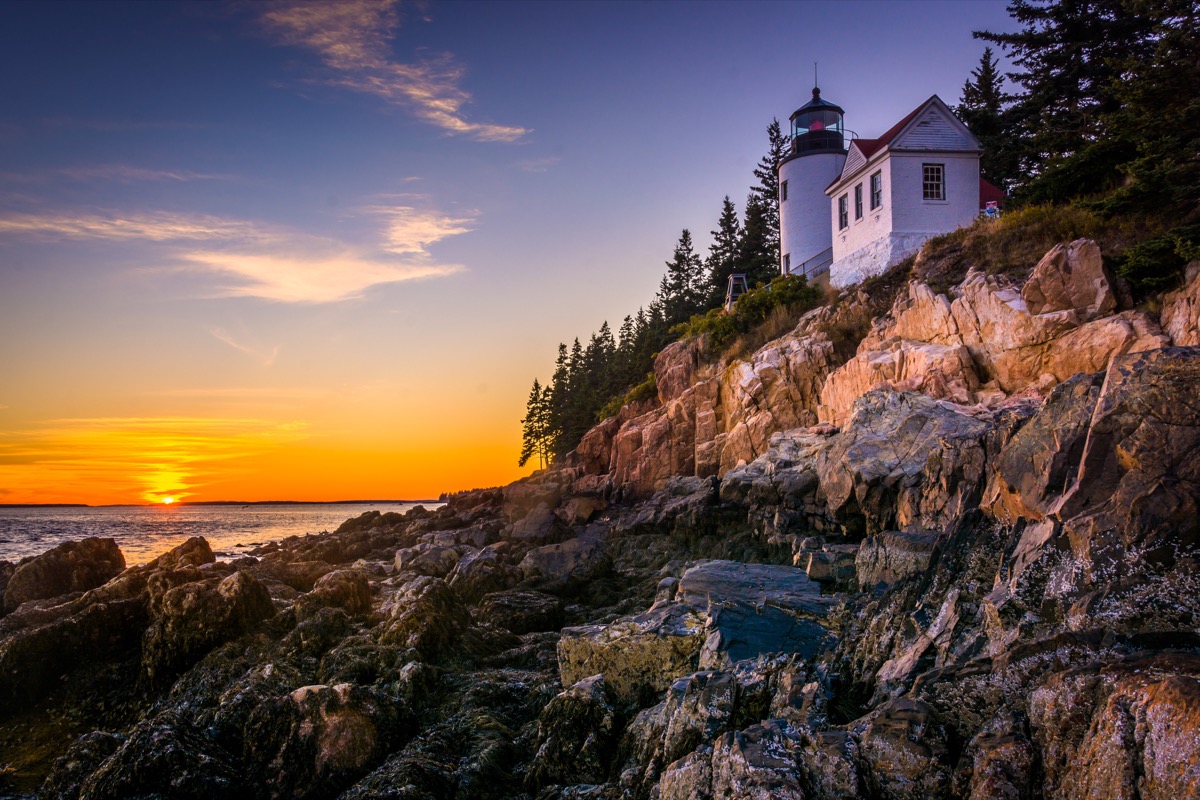
New England may have just one national park, but Acadia is nothing to sleep on. The rugged Atlantic coast gem shows off its glacially shaped granite summits, rocky shores, snow-capped mountain peaks, and diverse wildlife (think moose, bobcats, and peregrine falcons) via miles and miles of hiking trails and scenic drives. If you’re looking to join the more than 3.4 million people who visit each year, you should do so in September and October, post-summer and pre-winter—just on the cusp of leaf-peeping season. Naturally, Maine’s winter months spell out freezing temperatures, and while July and August are pleasant, they’re also prime tourist season.
Pro tip: See Acadia’s rugged coastline by water on an outing with National Park Sea Kayak Tours. You’ll paddle along Blue Hill Bay, Western Bay, and Somes Sound.
8
Book this one specific month at Grand Teton National Park.
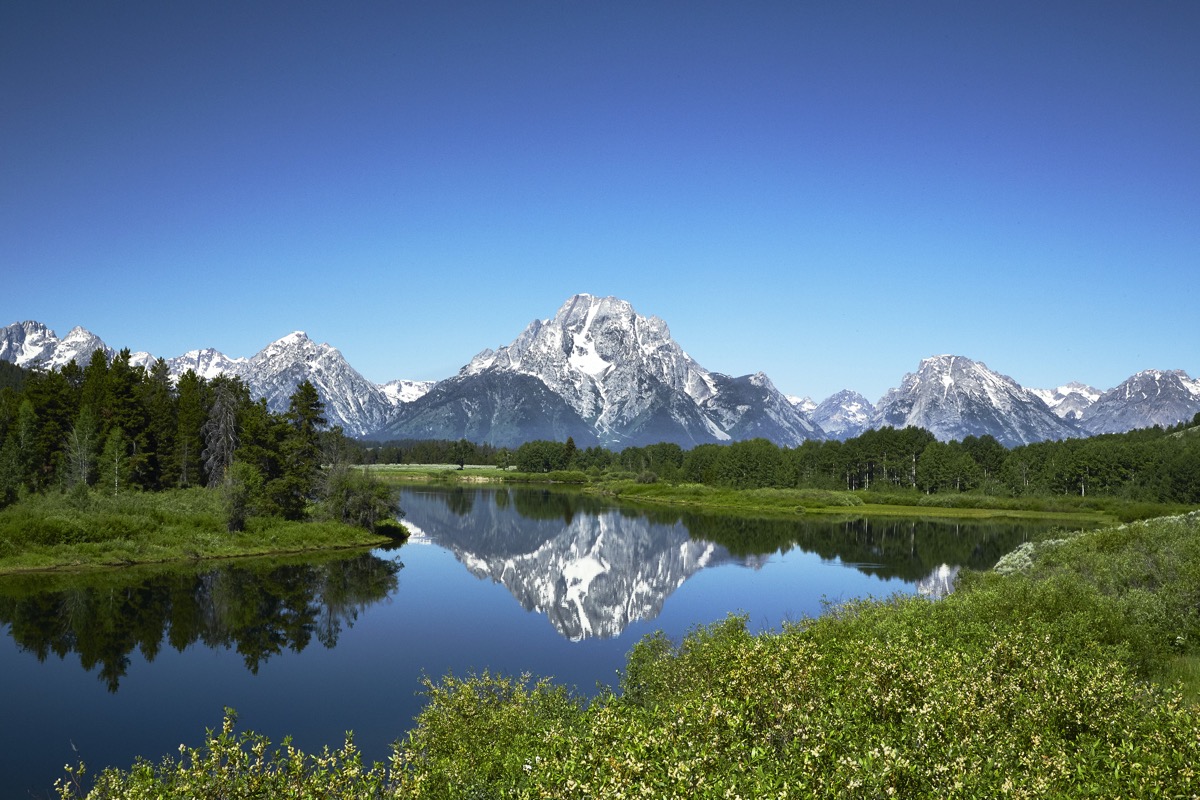
Just 10 miles south of Yellowstone lies Grand Teton National Park—a 310,000-acre swath that shelters winding rivers, serene alpine terrain, and nearly 10-million-year-old mountain peaks. More than three million adventurers came out in 2019 to hike, bike, fish, snowshoe, cross-country ski, and camp in the park, so we can only imagine how many will make the trek in the years to come. One way to ensure smaller groups? Arrive in mid-to-late September when the visitor centers are still open but the restaurants, hotels, and trails are finally less frequented.
Pro tip: Want a surprise? There’s actually a beach in the national park. Hike the Leigh Lake Trail to find a sandy spot overlooking Mt. Moran.
9
Hit the beach at Olympic National Park.
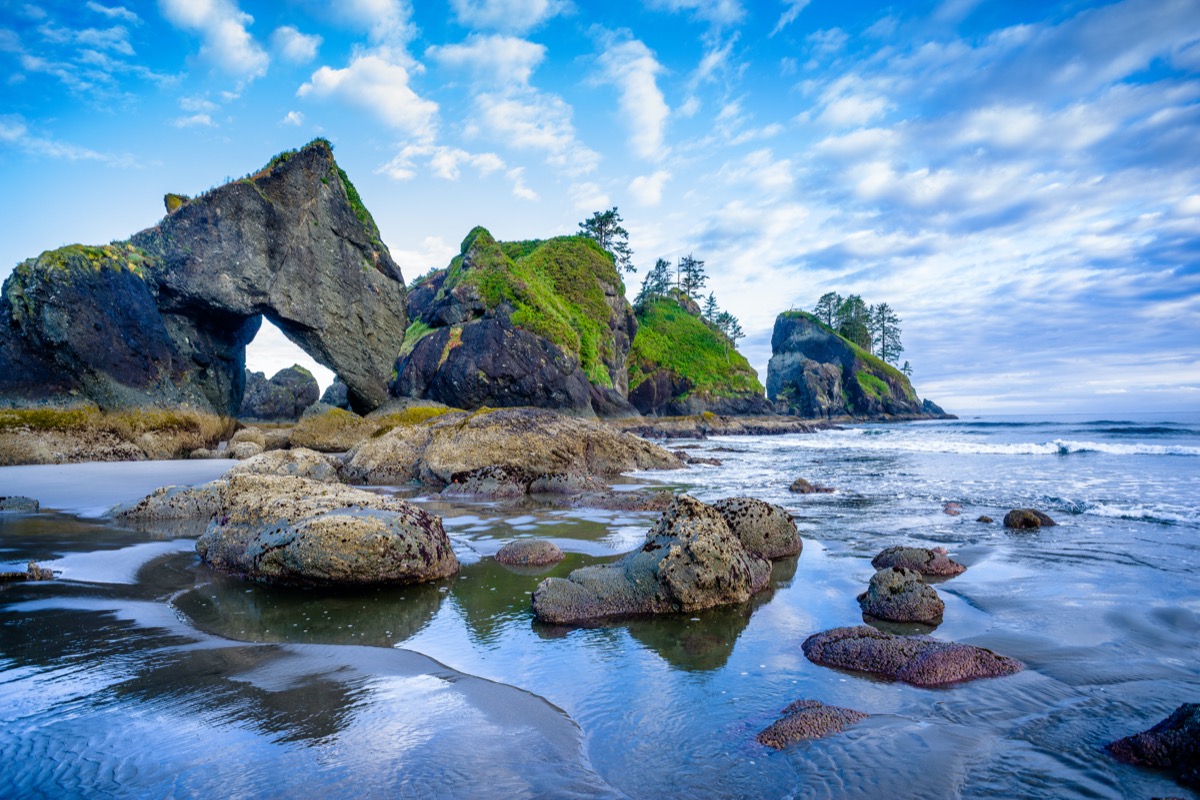
Washington’s Olympic National Park encompasses nearly a million miles of wilderness, including 70 miles of coastline. Planted firmly in the Pacific Northwest, a region known for misty weather and lush greenery, the park brims with wildflower meadows, boulder-strewn beaches, thick temperate rainforests, and cloud-covered glaciers—the combination of which drew more than three million sightseers last year. Like many other parks on our list, July and August are Olympic National Park’s most busy months. Before you opt for a winter vacation, though, keep in mind the weather and the fact that some facilities close down October through May. Instead, give late spring or early autumn a go.
Pro tip: While most tourists flock to the Hoh Rainforest and the Sol Duc Hot Springs, there are a few other places to check out. Ruby Beach offers spot-on sunset views, and Lake Quinault has untouched trails around its sapphire shores.
10
Explore the northern region of Glacier National Park.
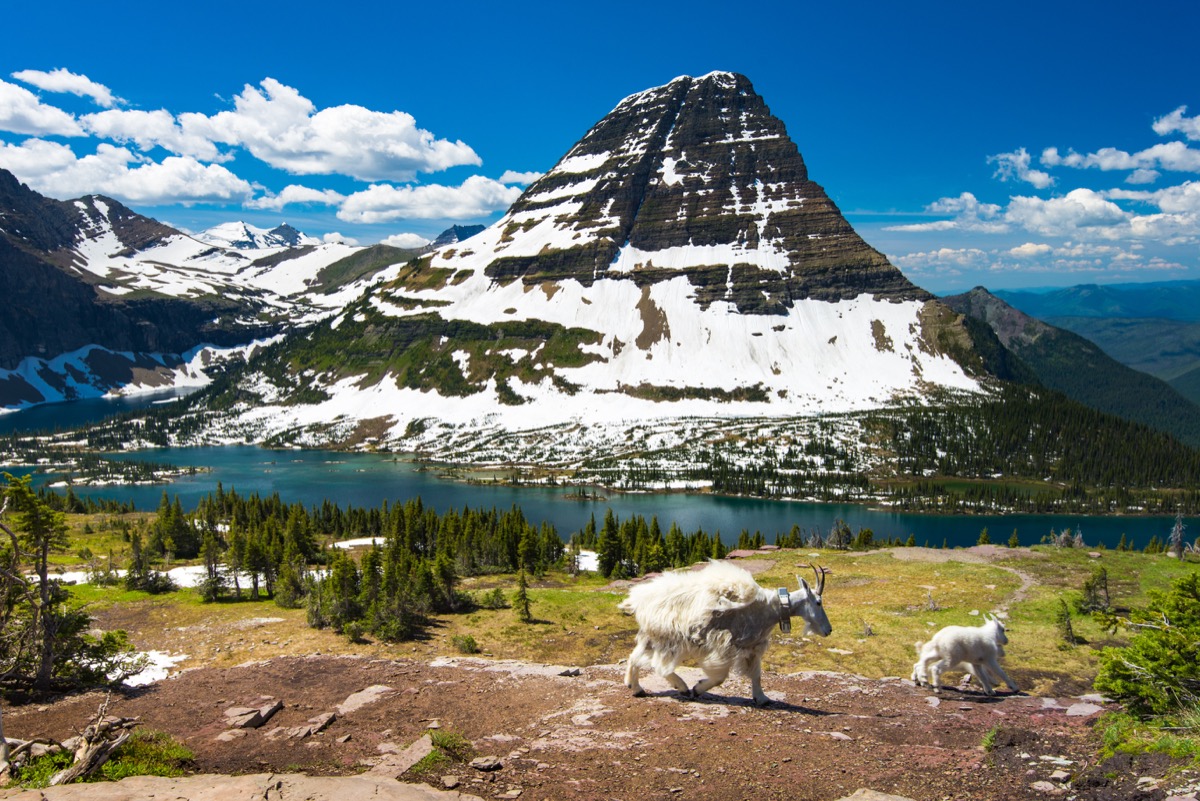
If you’re looking to cruise along Glacier’s two-lane, 50-mile Going-to-the-Sun Road sans traffic, listen up. Last year, the Montana park—which is dotted with alpine meadows, glacially formed valleys, and vast coniferous forest—saw a little over three million visitors, many of whom showed up in July, August, and September. While you may see snow in some of the park’s higher elevations later in the year, you can beat the crowd come October or really anytime November through April if you watch the weather closely. Many restaurants and hotels close up shop post Labor Day, but if you live within driving distance or are willing to stay in a nearby town, you’ll find great rates.
Pro tip: The North Fork region is less populated for a reason. Tucked away in the northwest corner of the park—almost touching the Canadian border—this area can only be reached by a network of dirt roads. It’s worth the bumpy ride, though, to see Bowman and Kinta Lakes, which perfectly mirror Glacier’s piercing peaks.
11
Head south in Joshua Tree National Park.
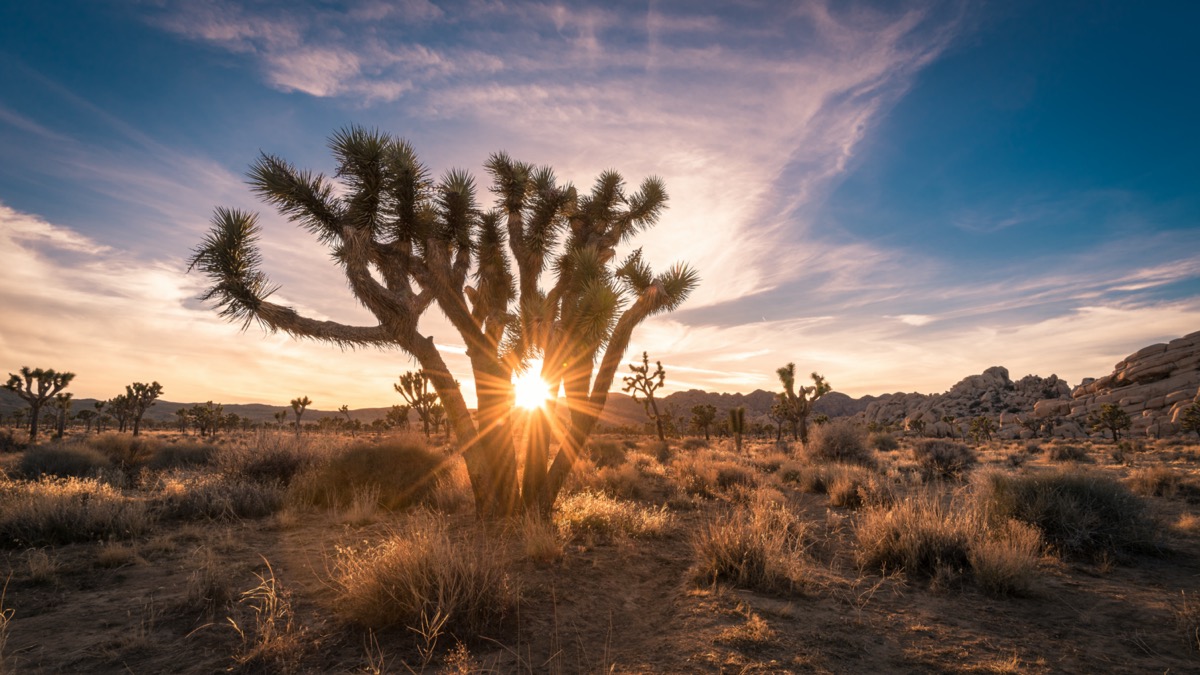
Southern California’s Joshua Tree National Park marries two distinct ecosystems: the Mojave and Colorado deserts. Between the pair—which encompass an area larger than Rhode Island—you’ll find bristled yucca trees (for which the park is named), the Little San Bernardino range, sparse flatland, and rocky outcroppings. Nearly three million individuals found themselves in the SoCal attraction just last year, and like every park on this list, its star is eternally on the rise. Drop by in October or November, though, and you might just find a little extra elbow room.
Pro tip: Most visitors tend to spend their time either at the Hidden Valley or the Barker Dam. But if you drive south towards the Cottonwood Campground, you’ll have the option of a 2.7-mile loop to Mastodon Peak or a 7.2-mile hike to the Lost Palms Oasis.
12
Descend below the rim at Bryce Canyon National Park.
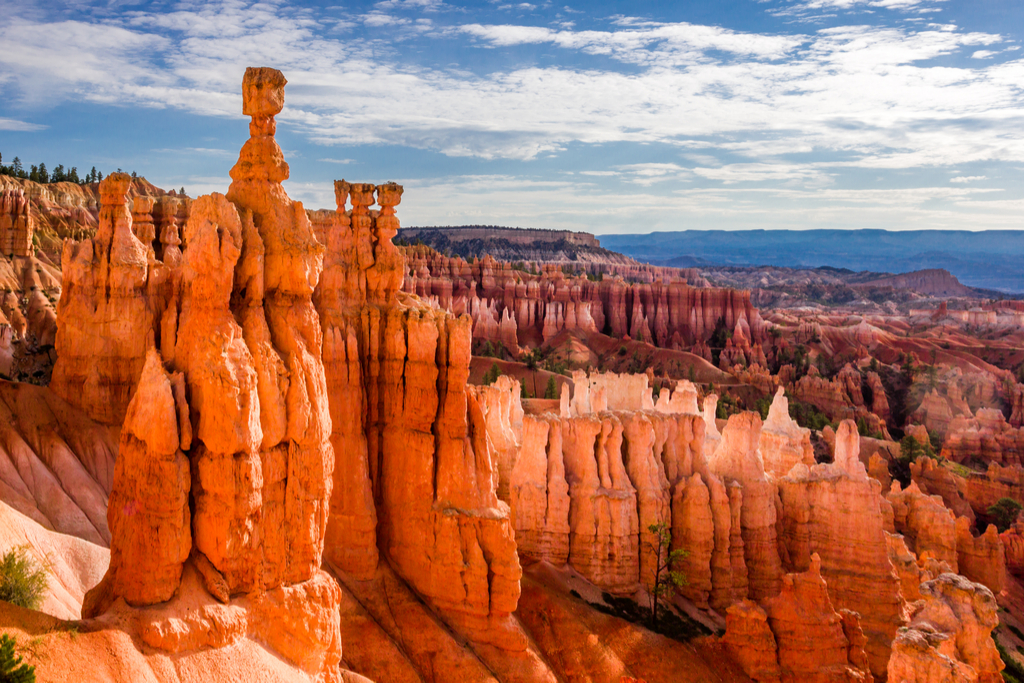
If you’ve never seen a hoodoo—a fairy chimney or tall rock spire, that is—lace up your hiking boots and head to Bryce Canyon National Park. The vast Utah reserve has the largest concentration of hoodoos anywhere on Earth, not to mention dark sky sanctuaries and colossal plateaus. Though Bryce Canyon is open 24/7, it takes careful planning to avoid the park’s other 2.6 million explorers. A mob tends to descend between March and early October, but the other months have their upsides, too, including fall foliage and temperate weather.
Pro tip: Although most visitors stick to the rim to get their sweeping landscape photos, the best views are actually found on the floor below. Hike the Peek-A-Boo Loop deep into the canyon to get up close and personal with the hoodoos and rock arches.
13
Climb steeper trails at Cuyahoga Valley National Park.
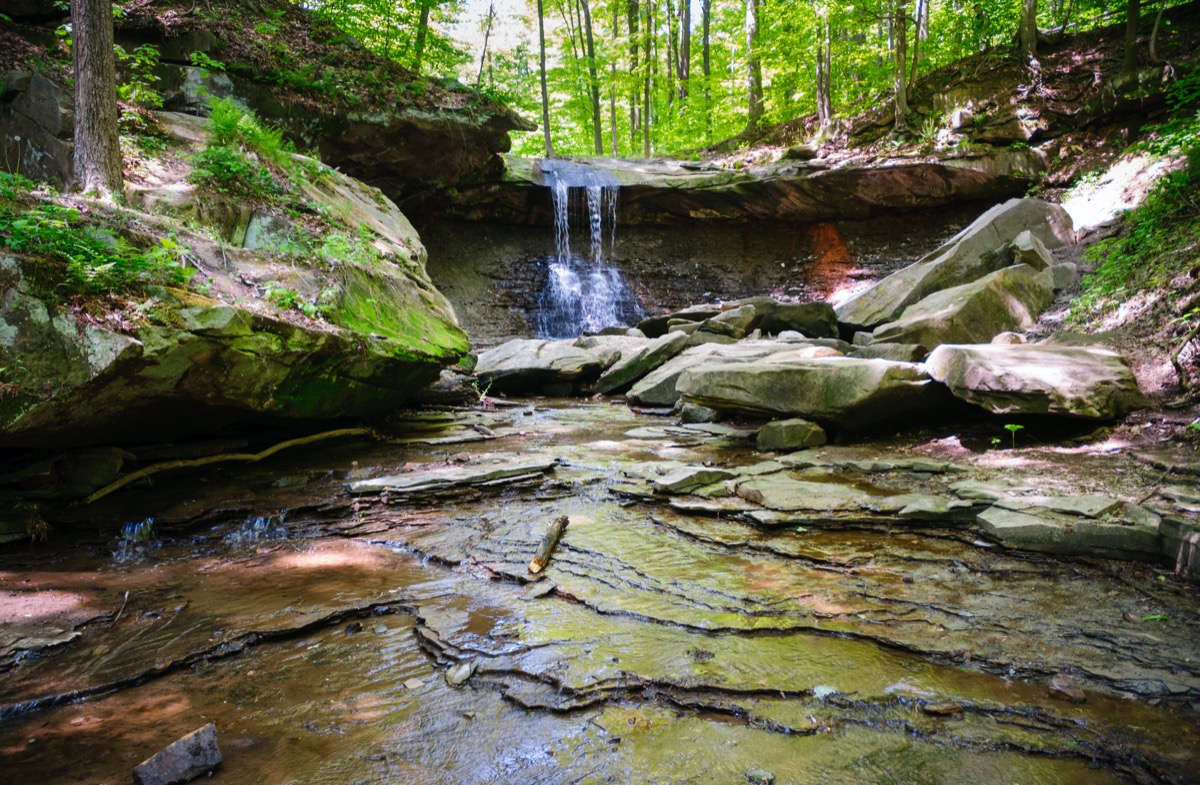
Cuyahoga Valley National Park lies between the Ohio cities of Cleveland and Akron, and is just 30 minutes south of Lake Erie’s shore. Despite its urban locale, the park is chock full of towering waterfalls, deep forests, and bucolic farmland. Last year, more than two million people enjoyed the park’s scenic diversions—many stopping by between May and August. Though spring is undeniably the best time to spot wildflowers, fall sees half the headcount and holds its own with vibrant foliage.
Pro tip: The four-mile Perkins Trail keeps the crowds at bay because it’s so steep. In fact, it requires a 300-foot climb to get to the top.
14
See the secret savanna at Indiana Dunes National Park.
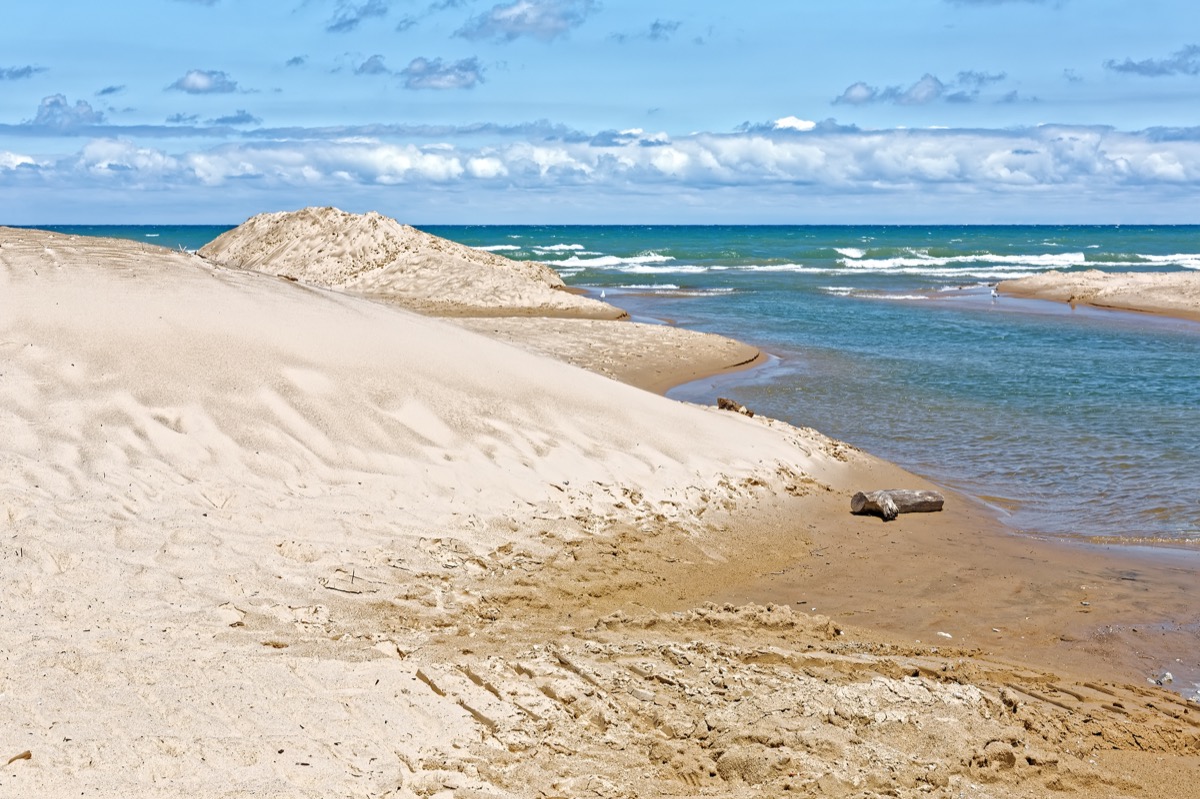
Indiana Dunes may not have been designated a national park until February 2019, but that didn’t stop it from clinching the 14th spot on our list. The park—which beat out the likes of Death Valley, Redwood, and Arches national parks (as well as more than 40 others)—saw around two million guests last year. If you aim to check the park’s meandering coast, extensive wetlands, and oak savannas off your list in the years to come, plan for a mid-week visit in the spring or fall when the crowds are slim and the weather is pleasant.
Pro tip: Ditch the dunes and head deeper into this park to see a vast topography. One impressive area is the 300-acre Hobart Prairie Grove, which features wetlands, forest ravines, and an oak savanna.
15
Don’t wait for the tram at Gateway Arch National Park.

Rounding out America’s most popular national parks is Gateway Arch. Unlike its siblings, Gateway Arch isn’t known for its dense hemlock forest or diverse fauna. Instead, the park’s draw is a man-made monument: a 630-foot stainless steel arch designed by architect Eero Saarinen. The earthquake-proof arch has stood proud over St. Louis, Missouri, since 1965, and last year two million visitors came to take it in. Summer is the monument’s high season, but drop by in winter—you can shed your coat on a tram ride to the top—and you’ll find far fewer tourists.
Pro tip: Because this is the smallest national park in the country, it’s pretty hard to get away from the hordes of people. However, while there’s always a long queue for the tram, not many make it to the Old Courthouse, which offers free exhibits and daily ranger talks.
And if you’re dreaming of your next outdoor adventure, make sure you consider The Best Time to Visit America’s 15 Most Popular National Parks.